Editor’s Note: FII’s #MoodOfTheMonth for January 2023 is Gender And Journalism. We invite submissions on this theme throughout the month. If you would like to contribute, kindly refer to our submission guidelines and email your articles to shahinda@feminisminindia.com
More women are choosing journalism as a career than they did a little over fifty years ago. Many of the men, according to the women’s rights organisation International Federation of Journalists (IFJ), “Looked at women as frail little mothers whose sole purpose in life is to cook, clean, and take care of the children. Some women had a different look at things, however. These women were women’s rights activists in journalism. They sought out to find and conquer anyone that tried to prevent them from writing.”
Investigative reporting, which covers subjects like corruption, human rights abuses, and other forbidden issues in the community, is one of the numerous fields of journalism that have evolved in recent years. Similar to their male peers, female journalists covering such controversial subjects may encounter physical violence, verbal abuse, threats, or even murder. But since they are women, the harassment frequently takes special, gender-based forms, such as sexual slurs, sexual violence, and threats against their families.
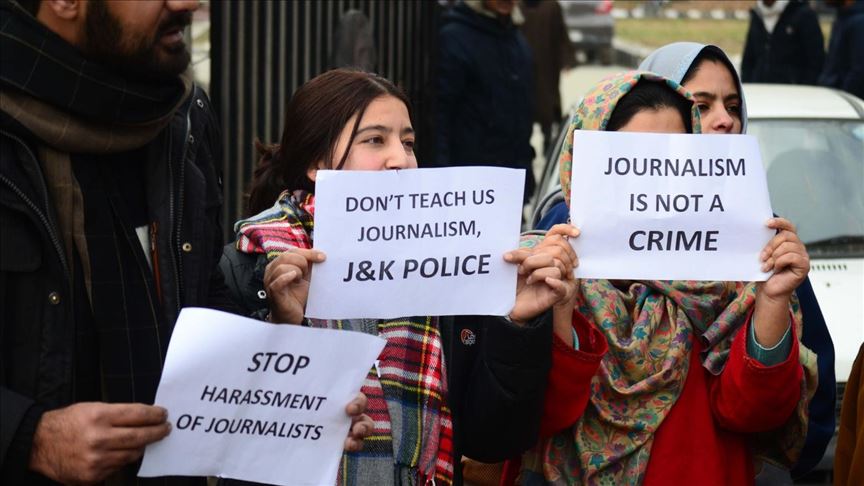
Online harassment is a problem that arises from societal oppressive power structures, including prejudices based on race, religion, and gender. In 2016, The Guardian looked at reader comments on its own website and discovered that, regardless of the topic of the piece, articles published by women journalists garnered more abuse and dismissive trolling than those written by men. Globally, the study discovered that nearly three-quarters of the female journalists polled had dealt with online aggression at some point in their careers.
The condition for Indian women journalists is generally dire. Gender-based violence, such as sexual harassment, psychological abuse, internet teasing, death threats, and other forms of abuse, is a problem for women journalists. It should be kept in mind that 12 countries worldwide, including India, allow journalists to be killed and walk free. These 12 nations account for 81% of journalist homicides in the last 10 years where no one has been held accountable, according to statistics from 2021.
However, when it comes to Kashmir, there is a different story. Online bullying and abuse tactics, physical assaults, threats against family members, and death threats are just a few of the many forms of violence that women journalists in Kashmir experience. Although this is more noticeable for content creators other than women journalists. A prime example is the murder of Amreen Bhat, a 35-year-old Kashmiri TikTok sensation and TV actress. Gender parity between men and women does not exist in the field of journalism for women in Kashmir. Due to the underrepresentation of women in journalism, it is impossible to assess the true scope of online abuse and harassment directed at women.
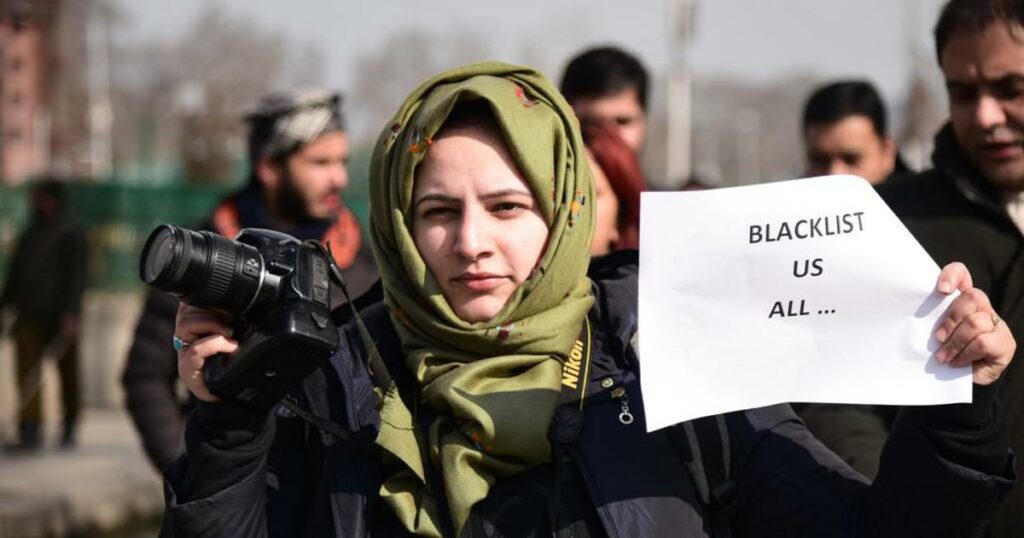
Online harassment and spectator indifference elsewhere are threats to women’s engagement in journalism, but there is still work to be done in Kashmir to address the underrepresentation of women in journalism. Women have not been adequately represented in journalism in Kashmir, and those few who have stood up for what they believe have at some time in their careers encountered criticism from society. Women are discouraged from and prevented from entering the field of reporting because of the unstable situation in Kashmir.
Reporting on news and events is more challenging in a setting where violence could flare up at any time. For journalists covering Kashmir, there is more than simply the regular news to cover. They are supposed to report on skirmishes, protests, unpleasant situations, and more in addition to violent encounters between police and the general population.
Also Read: Women Journalists: Reporting Loss From The Global South
Women are discouraged from starting their careers in media because of the aforementioned worries and the additional challenges posed by the professional duties of female journalists. Families are opposed to women working in journalism not because of online harassment but rather due to safety and security issues and visiting the office at unconventional hours. Only a small percentage of female journalists have achieved success in their fields and survived social and familial pressure. Attacks on female journalists working in the digital world are on the rise everywhere, especially when hate speech and misinformation collide and when harassment, abuse, and violence are used to try to silence them.
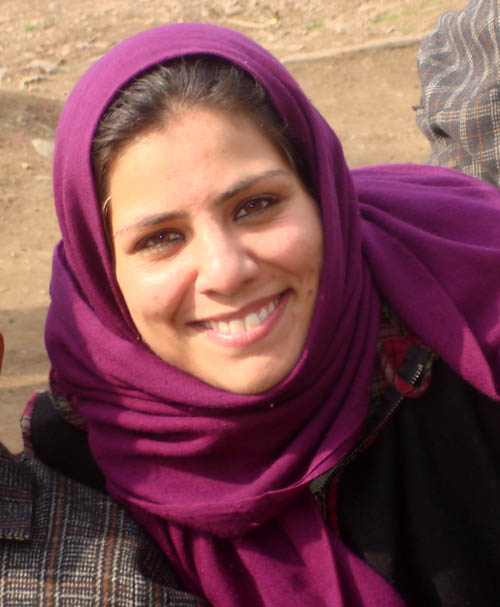
However, this is less typical in Kashmir. “In my long 15-year career, I have never experienced online hostility and abuse; rather, people have welcomed me with open arms. Online bullying and hatred are a matter of perception. My tweets have been retweeted; I have been tagged in stories and targeted and mentioned in posts. However, the question was about my ideology and what I stand for, not about my gender, sexual orientation, or whether or not I’m attractive,” Shahana Bhat, Senior Reporter Press TV.
In Kashmir, things are slowly changing now, and women’s journalism is now seen as considerably normal. In the past, people’s patriarchal and conventional views, as well as the demands of family life, prevented women from pursuing a career in the media. These attitudes are now changing.
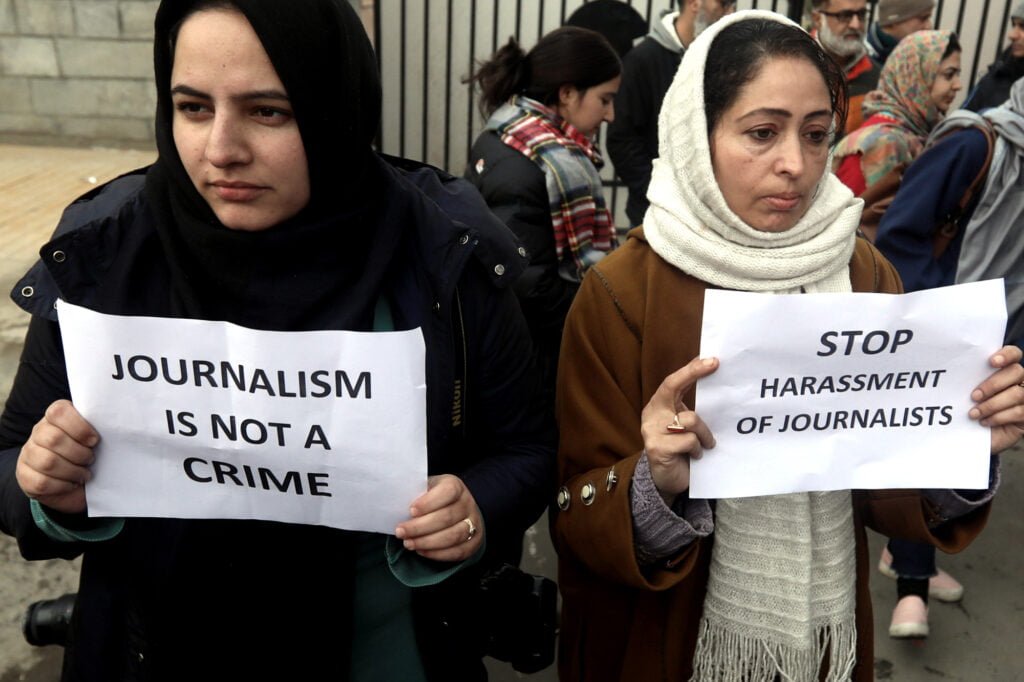
Under the condition of anonymity, a multimedia journalist with five years of experience covering human rights stories states: “Back then when I visited villages, people used to gaze at me as if I had done something out of the ordinary. In some manner, their gaze was filled with inquiries. Now that I know better, I can confidently say that the local community has never harassed or hated me online; they have just expressed their distaste for my work since this area is dangerous.”
Another woman journalist, Zeenat Zeeshan Fazali, Republic Tv said, “the field of journalism already faces a lot of difficulties and as my family was very encouraging, I could do what I do. The obstacles that women confront when working in the field are exacerbated when they are reporting from a place like Kashmir. Women journalists are subjected to a variety of challenges when reporting from a site of an encounter or an irregular incident. But you have to carve out a niche for yourself. People will eventually accept you and what you do.”
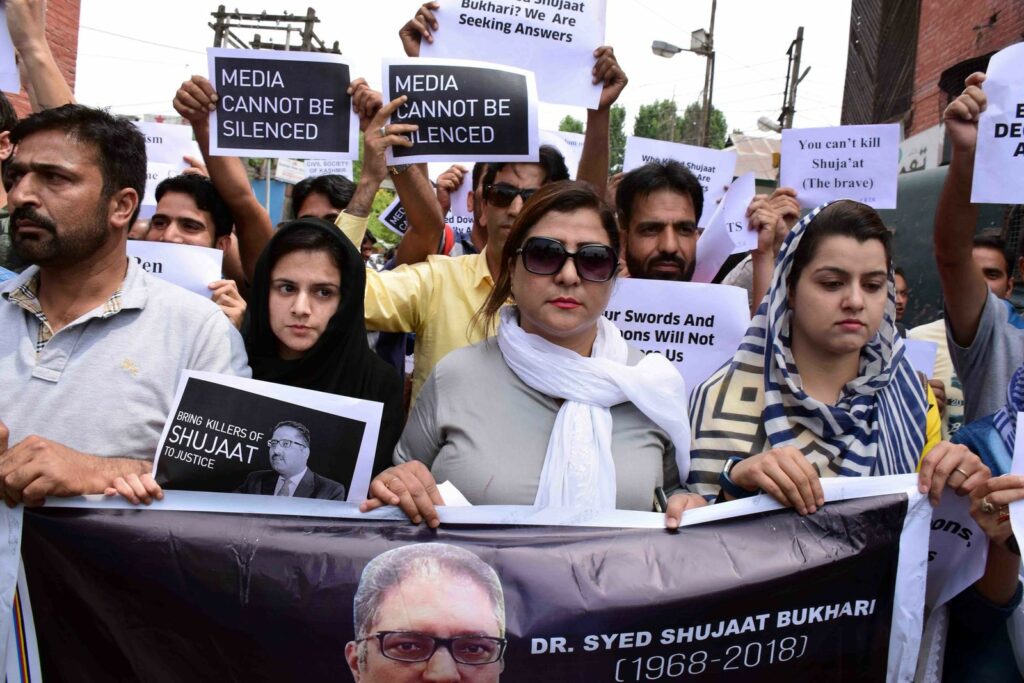
All women journalists have faced hindrances in some form; however, nothing has stopped them from performing their work. They have always stood their ground. “Online abuse, trolling, and sexiest remarks are the new normal for women. When it comes to women in journalism. We can check workplace harassment, but nothing can be done about online harassment. When we join the media, we are conditioned to receive hate and abuse, but it doesn’t stop us from doing what we do,” says Iqra Akhoon, journalist, Kashmir Life.
Also Read: Shraddha Walkar Murder: Is Media Paving The Path For A Theocratic Rashtra?
Internal and external management should offer sufficient assistance to any female journalists who are the targets of harassment and inform their team that such incidents are serious and will be handled immediately, especially if legal and law enforcement action is necessary. The situation for women journalists in Kashmir is slightly getting better. All interested parties need to be aware of the need to increase the representation of women in this underrepresented profession.
About the author(s)
She is a Research Scholar, currently dedicated to pursuing her doctoral studies in the field of Political Science and International Relations. With more than ten years of hands-on experience across various media-related domains, she has established herself as a seasoned Media Professional.





Online harassment is a big problem across countries and news organisations need to do more to help and support female journalists as they encounter online harassment. We could have training on how to handle online harassment as a part of journalism courses.